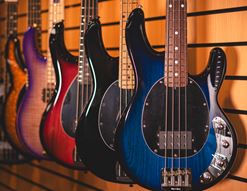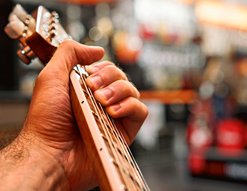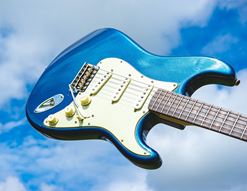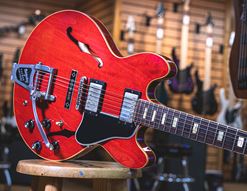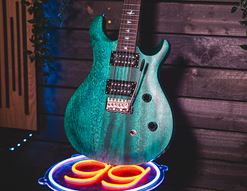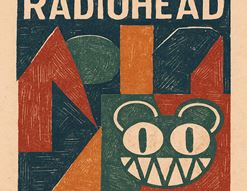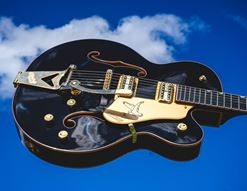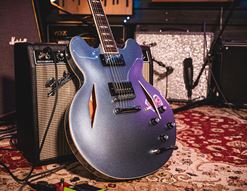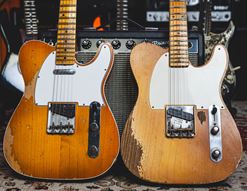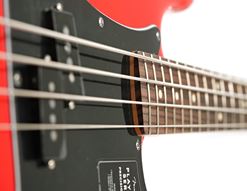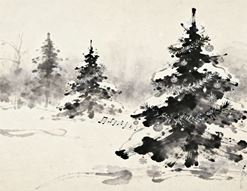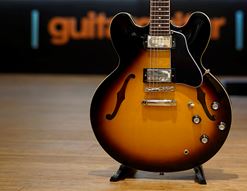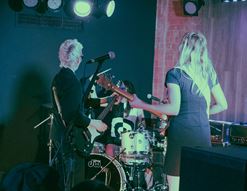What is electronic music? Electronic music can mean lots of things to lots of people. It can be the primal thump of a 4/4 kick drum beating its way through the earth at a forest rave; it can be the strident melodies and counterpoint of classic Kraftwerk; it can be the futurism of Juan Atkins or the synth-punk of The Prodigy. It can be any of these and hundreds more, depending on
Whilst each of those named artists are pretty diverse, they are all joined by the predominant (in fact, almost exclusive) use of electronic instruments like synthesizers, sequencers and drum machines. Eschewing the traditional setup of guitar, bass and acoustic drums, electronic music offers an entirely different sound, feel and style of performance.
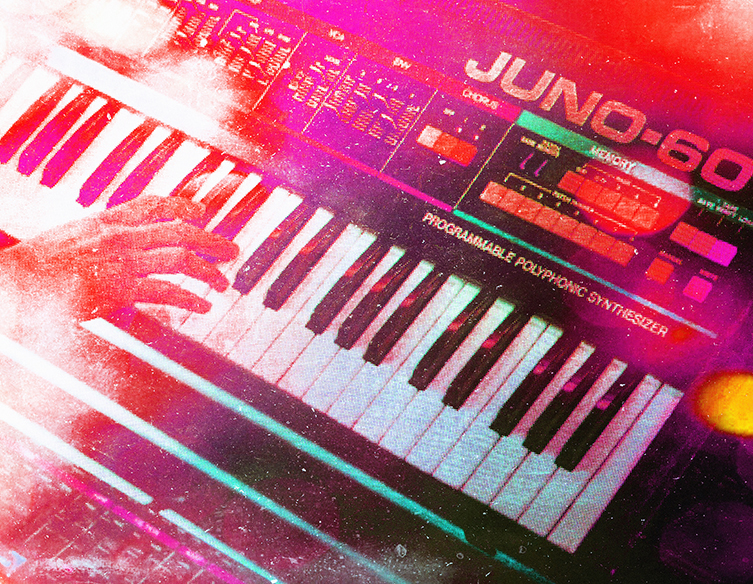
Today, my task is to offer an understanding to those who like the sound of electronic music but may not be fully clued up on the genre differences. There will be areas of crossover, since genre is a fairly fluid term here, and because lots of artists borrow influences from artists in other fields.
What I’ll focus less on today is the styles of rock music that incorporate electronic elements. This isn’t a blog about bands like New Order and Nine Inch Nails as much as it’s a blog about Aphex Twin and Cybotron. From Detroit to Berlin, Ibiza to Bristol, the world has been resounding to the low end thrum of electronic music. I’ll not put too much chronology into this, since there’s always debate about where and where certain musical forms arrive with us; I’ll just call out the terms and describe them from my decades of being both fan and practitioner of electronic music. There are also subgenres of subgenres, so I’ll tackle them within the context of the larger umbrella terms. Some of it may be a matter of opinion, so if you disagree with my terminology, you may sometimes be quite right!
Some acts (Leftfield, for an obvious example), dabble in many genres, so I’ll need to see how I get on with placing them, The Prodigy and Underworld. And plenty of others!
If you want to know your Acid House from your Detroit Techno, then this is the guide for you!
Electronic Subgenres at a Glance
Hardcore/Happy Hardcore/Gabber
IDM/Avant-Garde Electronic Music
Early Electronic Music
Electronic music has been around for over a century in various forms. Whilst people were not exactly going to raves in the 1920s, some music in electronic form was being performed on instruments like the theremin and the ondes Martenot that used vacuum tubes (the same we have in our valves today), leading to some composers in the late 1920s using them in tandem with orchestral parts.
By the 40s, the invention of magnetic tape allowed artists to record and manipulate sounds, leading to important movements like Musique Concrete, which used recordings of ‘found sounds’ (naturally occurring or industrially produced sound and noise) to create passages of music that were entirely new.
Karlheinz Stockhausen wrote and produced the first music made by entirely electronic means as far back as 1948, before early computers got involved in various ways during the 1950s.
Avant-garde musicians would always be the first to adopt new technology, but the masses caught on in the 1960s, when big companies like Yamaha began adapting existing organ instruments into more digital worlds, ending up with synthesizer instruments that could be understood and played by everyday musicians.
The Genre That is Kraftwerk
What genre are Kraftwerk? Of all of the electronic artists out there Kraftwerk - one of the very biggest and most influential - are also the most difficult to categorise. As its most reductive, Kraftwerk is simply compositions played on electronic instruments, but you can hear classical music, ambient music, techno, House, avant-garde and jazz in there, all with a characteristic sense of Futurism, nostalgia and optimism.
Kraftwerk are one of the few electronic bands that are equally loved and respected throughout the various electronic subgenres that exist. The writer Kodwo Eshun says it best:
“Kraftwerk are to techno what Muddy Waters is to the Rolling Stones: the authentic, the origin, the real”.
Disco and Giorgio Moroder
Between the dawn of affordable, mainstream electronic instruments and the boom of electro music in the 1980s, there was Disco music and there was Giorgio Moroder. Away from experimental music (or even the pioneering ‘Switched on Bach’ by Wendy Carlos, which was a game-changer and then some), electronic music reached most people via the dancefloor, as it does today.
Disco certainly started off being performed by live bands such as Chic, but as sequencing hardware grew more sophisticated, it got more and more incorporated into the music. Metronomic repetition is a feature of most music that’s made for dancing, and so the programmed nature of sequencers suited the music.
Producer Giorgio Moroder certainly understood this when created the Donna Summer hit I Feel Love in 1977. The tune was the result of a pretty cool concept: each track on Summer’s I Remember Yesterday album was to sound like it came from a different decade, with the final track - I Feel Love - supposed to be from the future. With the help of Robby Wedel, Moroder created futuristic arpeggios on a Moog synth and synchronised it with a click track, something he’d never done before. Overnight, the landscape of club music changed forever, and multiple new genres spawned from this simple enough concept.
Detroit: the Home of Techno
Techno is futuristic. Techno comes from the streets of Detroit, a post-industrial ghostland where crime rates had soared, businesses had closed and the future looked bleak. Instead of portraying that grim reality, musicians like Juan Atkins and Derrick May chose instead to paint a happier, most future-forward message with their electronic music.
Juan Atkins, techno pioneer and Cybotron founder from Detroit, says:
"Around 1980, I had a tape of nothing but Kraftwerk, Telex, Devo, Giorgio Moroder and Gary Numan, and I'd ride around in my car playing it."
Fellow Detroit innovator Derrick May (who, along with Atkins and Kevin Saunderson were known as The Bellevelle Three) talked about the European influence of his early music: "it was just classy and clean, and to us it was beautiful, like outer space. Living around Detroit, there was so little beauty... Everything is an ugly mess in Detroit, and so we were attracted to this music. It, like, ignited our imagination!"
Jeff MIlls is another titanic figure in techno. Another Detroit native, Mills, whose excellent nickname is ‘the Wizard’, was the founding member of the ultra-influential Underground Resistance, and came to techno first via DJ’ing, where his talent for scratching and mixing disparate beats was groundbreaking in itself. Local club residences allowed Mills to experiment, incorporate equipment into his sets and develop what eventually became the techno sound of Underground Resistance.
Using Roland drum machines (the TR-909 was the one for this sound) programmed to continuous ‘four on the floor’ kick drum beats and off-beat hi-hat hits, intertwining lines of analog synth and found sound, these artists painted the future as a shimmering, glittering place full of mystery and beauty. The fact that you could also dance to this music for hours on end only deepened the connection that music lovers across the world felt. Techno came from Detroit, influenced from Dusseldorf, and spread throughout the world. Here are some techno tributaries…
Techno
Techno can be seen in some ways as being a river from which many other electronic genres break off and head down their own streams. House, acid house, trance and hardcore all owe their genesis to techno.
- Techno, as a musical form, is as organic as any other genre, though there are recognising factors. Here’s a few:
- 4/4 time signature with a central rhythm that includes off-beat emphasis, normally on a hi-hat sound
- Musical sounds that are mainly (or completely) synthesized or electronic in nature
- Continuous and flowing in nature
- Chord changes are by no means a given; monotone is very accepted
Techno is influenced by Kraftwerk, Giorgio Moroder and Gary Numan, and started in Detroit, as detailed above. Tempos are a factor in understanding electronic music, and techno tends to uses tempos from 120-150 bpm. Techno can venture into some very austere and abrasive sonic landscapes, and is generally viewed as quite serious sounding and intense, particularly a sub-subgenre known as Hard Techno. This of course makes it amazing to dance to!
Electro
Electro is often used synonymously with techno, and in fairness is often difficult to distinguish. Electro can mean a few things today, but at its inception, it was the culmination of the post-disco period, with futuristic music influenced not only my Kraftwerk but also by the Yellow Magic Orchestra (Japanese band who were the first to record with a Roland TR-808 drum machine) and the writing of Alvin Toffler.
Afrika Bambaataa is probably the foremost example of early electro music, his seminal track Planet Rock proving to be a real turning point for the genre.
Electro tends not to have vocals, and the instrumentation is (normally) entirely synthetic. Of course, Electro took off in various directions as artists picked up on the sound but added their own influences. Obvious examples are Detroit techno and drum and bass, but you also have more recent genre diversions like electro-soul, electroclash and electrohouse.
House
House music is superficially similar to techno, though its tempos are maybe more in the region of 120-130bpm, so techno can go slightly faster. Sonically, techno is also generally harder and sparser sounding than house, which is more funky and less aggressive (usually).
House music got its name from The Warehouse Club, a club in Chicago where the sound developed. Local record stores would promote up and coming artists’ white label records by labelling them ‘played at The Warehouse’, which eventually got shortened to ‘House’.
The main player here was DJ Frankie Knuckles, who pioneered the sound during his DJ sets at the Warehouse, before taking his sound to New York, Paris and London.
It’s probably fair to say that most club music you generally hear in big clubs and venues is a form of house music: you’ll hear more samples and chord changes in house music than you will with techno, again, generally speaking. Also, it’s pretty normal for house to have vocals or repeating vocal samples, so it crosses over into mainstream/pop music more often than other electronic genres.
Acid House is a significant offshoot of house. It’s what lots of people erroneously label as ‘rave music’, which is like calling rock music ‘gig music’ since it’s played at gigs! Acid House highlights a particular synth known as a Roland TB-303, a device invented as a bass generator but far better known for its squelchy, highly distinctive sound. Acid techno also exists, and it seems to me that the only difference is a preference for the 909 drum machine over the house-friendly 808. These microgenres can be hard to navigate! Listen to the track below by the Pump Panel (let’s get real: New Order are pretty much absent from this recording!) to hear how powerful a 303 and a 909 can be together…
Progressive house is another advancement of the genre. The main features of progressive house are long build-ups, a greater focus on sound design elements (texture and effects over traditional synth tones), atmospheres and a tendency toward using alternative time signatures (such as 6/8) on top of the typical 4/4 beats.
Trance
Trance music is again similar to house and techno, though the emphasis is mostly on instrumental music over vocal hooks. There’s more of a sense of a ‘journey’ with trance music: whilst all electronic music works on build-ups, peaks and troughs, trance tends to be more dramatic, as well as having specific breakdown sections.
As the name suggests, the idea is to develop a trance state within the audience, with hypnotic sounds and blissful passages being high on the agenda (forgive the pun). In terms of the origins of trance, there’s evidence to suggest that iconic muso-pranksters The KLF were the first to apply the term, in their 1988 release ‘What Time is Love? (Pure Trance)’. Early trance music can be traced to Frankfurt labels like Eye Q and Harthouse, but it’s also famous for its Goan variant, where well-heeled travellers partied on Indian beaches in the early and mid 90s to trance music. Blissful!
Psytrance is a development of the trance music produced for the Goan scene. With more eastern and mystical elements mixing with the rhythms, psytrance (short for psychedelic trance, as you probably guessed) adds perhaps more advanced rhythmic arrangements and busier melodic parts. Psytrance is often faster than regular trance, often using bpm’s of between 140-170.
EDM
EDM stands for Electronic Dance music and is a collective term rather than a genre. Lots of electronic music fans actually don’t like the term, but it has somewhat stuck in culture. EDM collects together techno, house, drum and bass, electro, trance and more.
Without sounding elitist about it, it’s a catch-all term for newbies to the world of electronic music, or it’s a convenient term for casual fans who aren’t more specific in their tastes. I suppose it’s like saying you like ‘rock music’, when that could mean The Clash, Guns n Roses, Oasis or Fleetwood Mac. It’s not too specific! EDM as a term was coined in America and has spread to other countries since.
Although EDM is used as I’ve described it, the term often gets used in place of mainroom house, an offshoot of house that is relatively straightforward (i.e. not progressive), very punchy and popular. Acts like Aviici and the Swedish House Mafia fall into this particular genre.
Breaks/Big Beat
Electronic music has had breakbeats in it since the 70s (I don’t mean to constantly go back to Kraftwerk but…), but breaks (syncopated, funky drum beats, basically) really came into their own when sampling took off. Any artist with an Akai sampler and an ear for a good sample (any moment in a song where it was just the drums playing) could build up a very professional sounding track with a repeating sample of only a few bars. James Brown was an excellent source, as was the famous ‘Amen break’, which I guarantee you’ve heard before! (go to 1m 26 for the legendary break)
Breaks never replaced 4/4 beats in techno or house, but were often used alongside them, on in fills. Breaks belonged to hip hip, which developed with the same technology at the same time, but with a totally different focus.
As with all electronic music, there are no hugely rigid distinctions, and ‘Big Beat’ is a good example of this. Did it come from the Heavenly Social nightclub in London, back in the 90s? That’s where you would hear pioneers The Chemical Brothers utilising multiple drum machines and samplers to create their (surprisingly uncompromising, given their popularity) huge, beat-friendly electronic music. They borrowed liberally from hip hop, and not least from their former namesakes the Dust Brothers, who DJ’d in a similar fashion in the US before producing game-changing records for hip hop acts like The Beastie Boys.
Vinyl aficionado DJ Shadow released Entroducing onto the world a year after the Chemical Brothers’ Exit Planet Dust, and brought an authentic hip hop sensibility to a style of music that put sampled jazz breakbeats at the front of the music.
One band that I’m going to throw in here are actually quite difficult to label: The Prodigy. Responsible for bringing dance into the rock arena, The Prodigy were absolutely a rave band before their sound developed to include hip hop beats, a greater variety of rhythms and the sensibility of punk rock. Everyone has their own take on just genre(s) The Prodigy are and aren’t, but they are certainly game-changers, and have always marched to the beat of their own twisted drum.
This spawned into another genre (see Trip Hop), but back in the UK, artists like the Propellorheads (yes, the Matrix lobby scene music) and Fatboy Slim (formerly known as Housemartin member Norman Cook) were turning out large party anthems with distorted, hyperactive drum beats. In fact, the songs were built around these beats, and the music itself bore a large resemblance to rock music, except without the guitars. Beat Beat became the festival sound of the mid 90s, as bombastic as it was difficult to dance to.
America caught on a little later (as they tend to have done generally with electronic music, let’s be honest) with acts like The Crystal Method adding power to the punch, as it were.
There are plenty of electronic acts that could somewhat fit in this genre, but I’m loath to. I’m thinking of Leftfield and Underworld. Those are two very significant acts, and deserve plenty of space in any electronic music debate, but they also cross a lot of genre boundaries, and I’m not sure they belong here!
Hardcore/Happy Hardcore/Gabber
Hardcore is, generally speaking, what people mean when they say ‘rave’ music. There are lots of viewpoints on what is and what isn’t hardcore electronic music, so I’ll try to swerve some of that and say that it’s a high tempo (160-200 bpm) relatively abrasive blend of techno and house from mainland Europe, with elements of trance in there and occasional breakbeats sampled from hip hop records. The kick drums on hardocre tunes are pretty furious (they are often actually a blend of a kick drum sample and a distorted synth) and the music is often similarly gnarly with synth blasts and pulses.
The breakbeats would develop into jungle (see below) and then into drum and bass, but the music that focussed on the 4/4 kick drum beats are what we think of as hardcore music. The inclusion of rave drug ecstasy in the late 80s helped usher in the ‘second summer of love’ and the birth of the happy hardcore scene, which featured music that was still fast and intense, but also cheeky and fun-loving. The Bonkers compilations of the 90s are perhaps where most people got their dose of happy hardcore, apart from in dark fields in the middle of nowhere standing in front of a blasting PA system!
Gabber is a brutally intense version of all of this, and must not be unleashed on unprepared individuals. It’s basically fast, dark sounding Dutch hardcore, to put it somewhat glibly.
Has there ever been a musical style so simultaneously left-of-centre and populist as hardcore? I don’t know if there has been!
Drum & Bass/ Jungle
Drum & bass is a sound that everybody can immediately recognise, thanks to the distinctive drum accents that seem to get used perennially. It’s a futuristic, urban style of music that came from Bristol as much as anywhere (it's definitely English) and its major proponents at the beginning were Roni Size & Reprazent, Goldie and Grooverider.
Drum & bass grew out of the Jungle scene, which itself developed from the dub reggae music that was being played at free festivals and sound systems parties around the UK. Because of the 1994 Criminal Justice Act, most of these events were not, strictly speaking, legal enterprises, and so these scenes developed in a very natural, underground way.
When Roni Size won the Mercury music award, it legitimised the genre in a mainstream way, up to a point. Drum and bass was neither seeking - nor did it overtly attain - a mainstream following, but the sonic ambition and production levels that were displayed in that music certainly put a mark onto the cultural landscape of mid to late 90s music.
Musically, Drum and bass utilises fast breakbeats, lots of low end frequencies and a mixture of sampled textures and heavily synthesized sounds. Although the tempos start at about 165 bpm and rise from there, it seems to me that the intensity of the beats is more important than the tempo itself. The Amen break we looked at earlier is also huge in drum and bass, to the point where artists nowadays can program that exact beat without knowing where that sound initially came from!
The influence of dub reggae cannot be overstated: elements from Dancehall, like MCs performing improvised rhymes, to the effected low end rumble of the bass elements, are all taken from the development of reggae into dub and beyond. It’s a fluid thing of course, and the heavyweight breakbeats scene is (thanks initially to hip hop) where the drums entered the mix.
Lots of producers dabble in drum and bass in addition to other genres: it’s not unusual to hear elements of drum and bass show up in the work of artists who aren’t ‘of the scene’ in the way that, say, Black Sun Empire are.
Hardstep is a further development of drum and bass, and is characterised by, as I hear it, a more direct take on the genre’s properties. I also want to say that it’s heavier, if that term applies? Techstep is another form of drum and bass, and tends to have a darker, more ‘urban paranoid’ type of sonic footprint.
UK Garage/2-Step
Is it too flippant to call UK Garage music the poppier-more RnB-influenced version of jungle? It emerged in the mid 90s alongside drum and bass, and is distinctly less aggressive, and less futuristic. It’s a sound for RnB clubs, for mainstream nights out, like a modern, musically dissimilar but culturally equivalent take on disco music.
2 Step is an offshoot of this, with beats that are more heavily syncopated (you need to take two steps to dance to them because the beat catches you off guard) but otherwise with a similar urban RnB sound.
Garage involved - as all of these genres have - into other avenues: grime is essentially MC’s rapping over garage music, and drill is an extension from there.
Dubstep
Dubstep is, at the moment, something of a maligned genre. These things come and go of course, but maybe dubstep imploded so quickly because it also grew huge so quickly?
Sonically, dubstep is like slowed down brum and bass with a very specific snare sound (huge, basically) and lots of very distinctive ‘whomp-whomp-whomp’ synth noises.
Dubstep came out of the UK Garage and 2 step movement, but with a sound that’s easy to distinguish.
Trip Hop
Initially thought of as ‘comedown’ music, Trip Hop is a downtempo style of electronic music that is often vocal-based and can often be a blend of electronic music and more traditional ‘band’ music.
Most people would agree that trip hop comes from Bristol, and again is a development of dub reggae soundsystems along with other influences that even include punk. Massive Attack are the obvious proponents of trip hop, but they are also somewhat anachronistic, since their sound has developed into more atmospheric and cinematic directions.
Portishead are a great example of a live band playing trip hop with a DJ as a band member (very 90s!) and Tricky is something of a figurehead for the trip hop sound, which one might characterise as somewhat dark, narcotic and paranoid. And very cool, obviously.
Ambient
The subject of ambient electronic music already fills up shelves’ worth of worthy books, so I’m hardly going to nail it in a few paragraphs, but I’m nothing if not a trier! Ambient electronic music has, I suppose, been around since at least those experimental pieces I mentioned from the 40s, right back at the start of this blog. It depends on how you define ‘ambient music’, but if we go with ‘music that is designed specifically to be heard alongside a particular environment’, we may be getting close to something.
Brian Eno is often regarded as a pioneer of this music, and the story goes that he ‘discovered’ the concept of music that you only semi-listen to when he was in bed ill and couldn’t get up to adjust the volume on his record player. His friend has put on a record for him and then left the room, with Brian struggling to hear the quiet volume. This quasi-fugue state that his ears suffered became a new concept in music.
We now have ambient music for everything: famous ‘chill-out’ rooms in Ibizan superclubs that play Vangelis records to frazzled clubbers; specially commissioned ‘sound sculptures’ for art galleries and museums; and endless Youtube playlists with all manner of ambiances for meditating/doing homework (as if those are somehow co-existant)...ambient music is sound in service of a mental process, if you will. As with all music in the world ever, some of it is great and some is useless. It just takes a little bit longer to figure out which is which with ambient music!
IDM/Avant-Garde Electronic Music
The title for this entry is a little pernicious. I’ll admit, this is where I’m putting a bunch of pioneering, game-changing artists who don’t fit easily into some of those other genres. I hope it’s also ok for me to point out that the term IDM (it stands for Intelligent Dance Music, as if everything else is for idiots) is a silly term, and one that I’ll not be using henceforth.
Avant-garde electronic music is where boundaries are broken away from the dancefloor, or at least with one foot elsewhere, as it were. Electronic music has always been about far more than simply going to a club and being bludgeoned by a loud kick drum.
Anyway, there is no style to this collection of incredible artists, since that would somewhat undermine the eclectic nature of their work. From the Future Sound of London’s kaleidoscopic collages of future world music to Aphex Twin’s deconstruction of sound itself, there’s so much to say and explore here that you’ll have to just dive in yourself and have a taste. Here are some places to begin, at least:
- Future Sound of London - Dead Cities
- Jlin - Dark Energy
- Aphex Twin - Selected Ambient Works II
- Boards of Canada - Geogaddi
- Autechre - Tri Repetae
- Squarepusher - Hard Normal Daddy
- Jon Hopkins - Immunity
- Holly Herndon - Platform
It’s possibly also a good idea to pay attention to labels instead of artists, if you want a curated collection of music that appeals to a particular taste. Warp records were the big 90s label to follow, and today’s choices are unsurprisingly diverse. Still, for avant-garde electronic music, these places are good starting points:
- Eclero
- Minority
- Stroboscopic Artefacts
- Sub Rosa
- Cuneiform
There Are Oceans of Music Out There
It can be a little bit overwhelming sometimes to consider just how much music exists in the world today. Blogs like these exist to try to make sense of some corners of music, and to direct enthusiasts towards hopefully the more brightly-lit embers that glitter in the big collective hall of music we all draw from.
I hope that’s what this blog has done today, in even a small way. I’m sure you’ll disagree with some - or many - of the definitions and descriptions I’ve made today. That’s all good! It’ll strengthen your own understanding by way of opposition. There are also many more subdivisions that are constantly changing like mercury, so these sub genre definitions are leaning on the more established or well-understood hemispheres of electronic music.
It’s a deep, deep subject, and I’ve only really scratched the surface today. There’s a ton of interesting history to delve into if your interest is piqued, and unbelievable amounts of amazing music. Dive in and enjoy!



